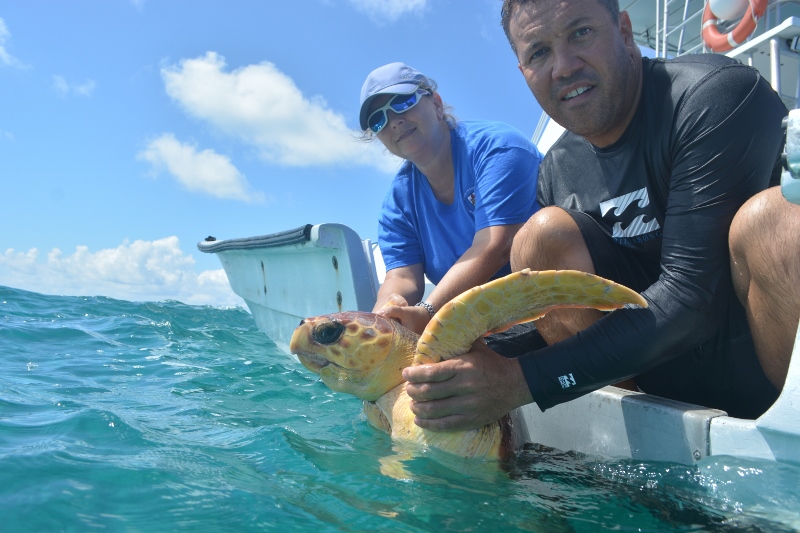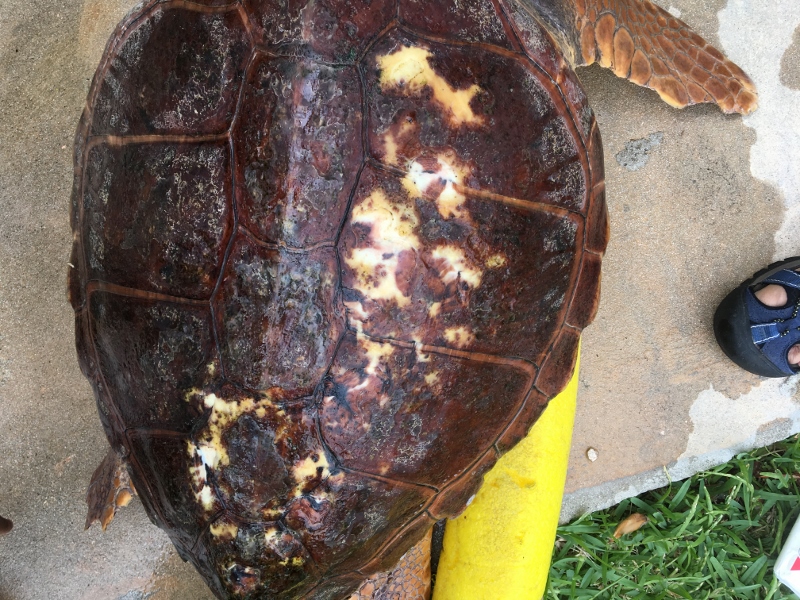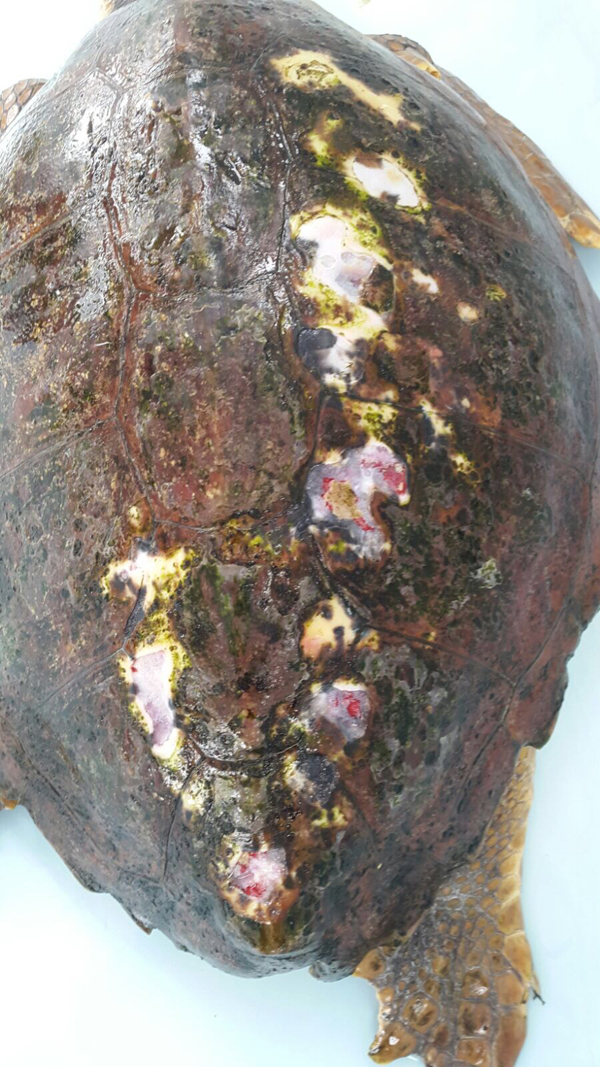Recent News
Photos: Lions Club Gas-O-Rama FundraiserSaturday, February 13, 2021
The Hamilton Lions Club, BZS Junior Volunteers and Rubis Terceira North Shore Gas Station are helping to raise money for Vision Bermuda and the Bermuda Zoological Society, with the 52nd annual Gas-O-Rama taking place today [Feb 13] at the gas station in Devonshire.
‘The Hunt’ Was On For Families Over Holiday
Tuesday, January 12, 2021
Over 80 families registered ‘The Hunt’, and those taking part have been able to experience and learn more about their island they thought they knew so well.
Rubis calendars will now be sold
Tuesday, December 08, 2020
After 42 years of being free, the Rubis calendar will now cost $5 each.
Aquarium junior volunteers get chance to complete programme
Thursday, December 03, 2020
Pupils enrolled in a competitive volunteer programme through the Bermuda Zoological Society have been given a second chance to complete it in the wake of Covid-19.
Bermuda Turtle Project Continues Research
Monday, October 15, 2018
The Bermuda Zoological Society in partnership with the Sea Turtle Conservancy completed another research and education programme this year, with the Bermuda Turtle Project committed to the goal of promoting the conservation of marine turtlesthrough research and education.
About
GovernanceAbout Us
Newsletter
Latest News
Gift & Bookstore
Contact
General Inquiries
info@bzs.bm
Latest News
All the latest updates and news from the Bermuda Aquarium, Museum, and Zoo, one of Bermuda's leading visitor attractions!
A loggerhead turtle named ‘Chad’ — who was found entangled in cargo netting last October — was released into the waters off our coast last week after a lengthy rehabilitation at Bermuda Aquarium Museum and Zoo [BAMZ].
“Divers from Blue Water Divers found Chad floating in Ely’s Harbour in October of last year. Chad was in considerable distress because he was tightly entangled in a massive amount of cargo netting,” the Department of Environment and Natural Resources said.
“The Blue Water team removed the netting but discovered that Chad could not dive below the surface so they brought Chad to BAMZ.

“Dr. Ian Walker, Principal Curator at BAMZ, examined the loggerhead. There were significant grooves in the marginal scutes of the carapace [grooves in edge of top shell] which would indicate that the turtle was entangled for a long time. It took about 10 days for Chad to start diving to the bottom of his enclosure.
“One theory for the buoyancy problem is that turtles hyperinflate their lungs as a survival mechanism. Since they are air breathers, making themselves positively buoyant would assist them staying at the surface to breathe in spite of the weight of the net. Another theory is that this is how their bodies respond to an infection.
“There were numerous locations where the shell was ulcerated and there was a concern the turtle was septic and therefore would not have a very good prognosis. Dr. Walker and the team knew Chad needed food, antibiotics, a clean environment and time to recover. The aquarists kept Chad well fed and clean. Happily, he began eating an average of 1.5lbs of herring a day shortly after his arrival.

“The healing process took quite a while; turtles can be quite resilient but they take their time getting better. Winter water temperatures slowed things down but as the water started to warm up, the healing moved along nicely. The loggerhead was examined monthly to assess the ulcerated shell. There were several spots that needed new bone growth.”
Roma Hayward, Animal Care and Quarantine Officer, was responsible for debriding the wounds monthly to assist with the healing process.
“Chad survived a terrible ordeal and has healed well,” she said. “He will have a microchip and flipper tags in the event he shows up somewhere else. He will be able to be identified and it signifies that he was captured before.”

The Department added, “Of the seven turtles species around the world, five have been found locally with the most common being Greens and Hawksbills followed by Loggerheads. Bermuda normally gets post-hatchlings [younger than a year] in the winter and spring that get washed in with sargassum weed but Chad is unusual in that he is much older.
“Unlike the other turtles found in the Atlantic the loggerhead pelagic [open ocean] stage is quite protracted as these animals spend many years drifting with the currents and sargassum. Chad is expected to eventually settle in the Eastern Atlantic to start the next stage of his life.
The Department also noted that Chad may not, in fact, be male, as his caregivers are unsure of the gender at this time since Chad is in the intermediate stage of development [neither juvenile nor adult]. These turtles do not develop any sexual dimorphic features until adulthood.


